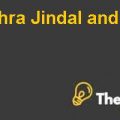
1. SOURCE OF DATA USED TO SUPPORT THE THESIS
The source of data used by the author to conduct the analysis is secondary analysis through the review of literature. The secondary data used help in understanding the research question in a more timely fashion and will add rigor in conducting the research. It also helps in answering several research answers themselves through the thoroughly reviewed literature. However, this literature review may prohibit the author from using his own conscience in conducting the analysis and make him completely rely on the results accumulated from the literature review. This may direct the results in the direction that flows from the literature review and will lack its ability to add the scientific knowledge Decision Making planning in the Meta-decision approach.
However, the origins from which the data is gathered may be questionable for adding quality to the research paper. In addition to this, it is always possible to omit useful data and select one that comes first in hand by making the research fall victim to adverse selection problems. The data gathered can also become obsolete and is therefore subject to minimize the generalizability of the research. It is therefore, significant for the researcher of this paper to categorize, trim down, and control the disadvantages that are escorted by the use of secondary research.
2. RIGOR AND RELIABILITY OF THE DATA
The data doesn’t seem to be rigorous in that and it does not use a variety of sources to seek the literature review, rather the data is collected from a single source; hence it is not rigorous. As the research doesn’t include any viable data, facts and figures, therefore, the data seems to be theoretical only. As a result, validity and reliability of the data can be doubtful. Further, the analysis of the article suggests that the author used a variety of sources, which can be seen through the list of references but the text cited is limited to a few authors only that limits the author’s credentials. However, it can be seen that to some extent the data is valid as it does measure what it is intending to measure, however, the data has limited reliability because of its inability to be generalized at a wider scale.
3. SUFFICIENCY OF THE DATA TO SUPPORT THE OBJECTIVE
The data is insufficient as it does not include any graphs or pictorials or other necessary interpretation that can be used to make the article more credible. The author did not use extra citation except for Kickert & Van Gigch and Hammond Keeney & Raiffa etc. which would add to the strength and rigor of the analysis; however, it can be seen that the author has used a lot of references that somehow deviated him from his direction. It can be seen that although the research paper flows in a logical fashion but it does only move around the circle of Meta-decision’s theoretical aspects. The exclusion of facts and figures from the article further deteriorates the credibility of the author and his credentials.
4. IMPROVISING SUGGESTIONS FOR THE ARTICLE
The research paper would have included charts, facts and figure of the organizations that have employed Met-Decision Approach in their decision making process and what implication this strategy had on its processes. It should include references from two to three credible sources that talk in particular about the uses of Meta-Decision Approach in their decision making process. The examples used in the article are good enough for the purpose of explanation but real time examples would further add to the rigor of the article. It should move away from the theoretical aspects and should rather focus on the number achieved from the previous researches conducted on the topic. It should also add reliability to the article by adding generalizability aspects to the research and must improve the validity and reliability of the research...............................
This is just a sample partial case solution. Please place the order on the website to order your own originally done case solution.












